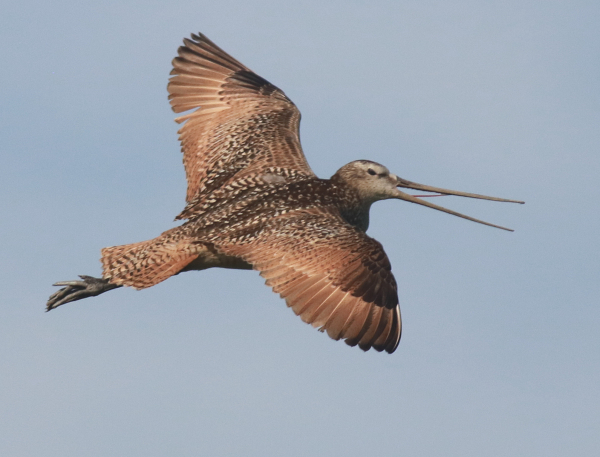
Marbled Godwits are among the 32 species of shorebirds that rely on northern California’s Humboldt Bay (photo by Paul Konrad).
|
The Western Hemisphere Shorebird Reserve Network recently upgraded Humboldt Bay in coastal northern California to a site of Hemispheric Importance. Recent research shows more than 850,000 shorebirds including 32 species utilize this exceptional wetland annually. A majority of the Pacific American Flyway populations of Western Sandpipers and Marbled Godwits use the Bay, and expansive nutrient-rich mudflats of Humboldt Bay have special importance to other species including Dunlins.
Biologists found that an estimated 176,000 shorebirds used the bay during summer and fall as a stopover during the pre-fall migration period, with an estimated 54,000 shorebirds present during winter, and 622,000 shorebirds using the Bay as a stopover site during spring migration.
Conservation relies on accurate descriptions of wildlife diversity and abundance over the annual cycle at a given location, and this research data provides a basis for conservation measures to ensure the protection of these valuable natural resources. For information about conservation concerns for Humboldt Bay, see https://www.audubon.org/news/new-study-finds-humboldt-bay-among-most-important-places-entire-hemisphere and for more information, you can also refer to this research publication: https://www.waderstudygroup.org/article/14584/